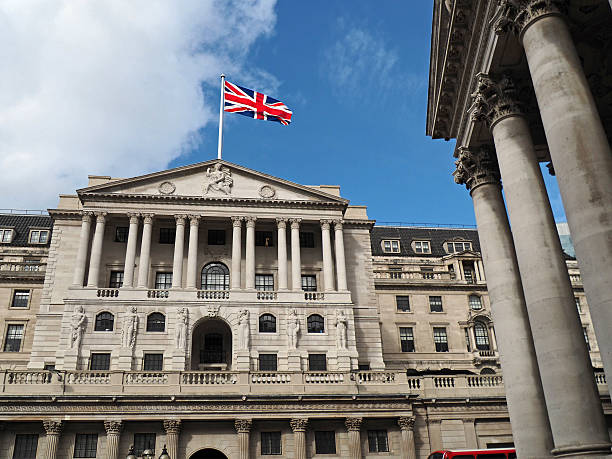3 Reasons Stablecoins Are Still a Risky Investment Choice

Key Points
Stablecoins are gaining a lot of attention as an alternative to U.S. dollars.
But a lot of those coins aren't actually backed by U.S. dollars.
They're also not designed to beat inflation or the market over the long term.
Stablecoins are gaining a lot of attention as an alternative to traditional cryptocurrencies like Bitcoin and Ethereum. These coins, which are usually pegged to real-world assets like fiat currencies or gold, are designed to generate stable long-term returns.
The most popular stablecoins are Tether (CRYPTO: USDT), USD Coin (CRYPTO: USDC), DAI (CRYPTO: DAI), TrueUSD (CRYPTO: TUSD), and PayPal USD (CRYPTO: PYUSD), all of which are pegged to the U.S. dollar. The issuers of these stablecoins back up their coins with their own reserves of cash, cash equivalents, and other assets.
Where to invest $1,000 right now? Our analyst team just revealed what they believe are the 10 best stocks to buy right now. Continue »

Image source: Getty Images.
These USD-backed stablecoins try to keep their price at $1. They can be held without a bank account, help people protect their savings in countries with currency devaluation issues, and facilitate faster and cheaper cross-border transfers than U.S. dollars.
USD stablecoins are also widely used in decentralized finance (DeFi) apps to pay out rewards, establish collateral for loans, and trade assets without a conversion to a fiat currency. They can act as a bridge currency to help crypto traders quickly switch between volatile assets. These stablecoins might initially seem a lot safer than other cryptocurrencies, but they're not risk-free investments. Let's review the three risks for stablecoins you should be aware of.
1. Not all stablecoins are backed by real-world assets
Most USD-collateralized stablecoins like Tether and gold-backed stablecoins like Tether Gold (CRYPTO: XAUT) are pegged to physical assets. Tether holds a mix of cash, U.S. Treasuries, precious metals, and other cash equivalents. Tether Gold directly holds gold reserves.
But there are two other types of stablecoins that are pegged to much riskier assets: crypto-collateralized coins, which are pegged to other cryptocurrencies; and algorithmic coins, which rely on automated computer programs to control the supply and keep their prices stable.
For example, DAI is a crypto-collateralized coin that holds a mix of Ether, Tether, Wrapped Bitcoin, and Lido Staked Ether instead of actual U.S. dollars or Treasuries. By only holding cryptocurrencies, it doesn't rely on any custodian banks to hold fiat currencies. But it's not fully decentralized, since it's still holding a lot of Tether (which is backed by actual U.S. dollars), and a crypto crash could reduce the value of its collateral and weaken its peg to the U.S dollar.
Many algorithmic stablecoins, like TerraUSD, crashed when their automated programs couldn't stay pegged to the U.S. dollar. Yet some smaller stablecoins are still trying to stay pegged with their own algorithms. If those opaque algorithms fail, those smaller stablecoins could quickly fizzle out if they're not backed by other assets.
Therefore, investors shouldn't assume all stablecoins are "stable" because they've been holding steady at $1. Instead, they should see what these issuers are actually holding as their collateral, and whether they can be trusted to stay firmly pegged to the U.S. dollar.
2. They're exposed to regulatory headwinds
Many stablecoins have sprouted up during the past few years, but they could be cut down by much tighter government regulations in the near future. Those regulators could scrutinize their underlying reserves and usage in cross-border remittances. They might even ban the riskier algorithmic stablecoins.
Those government regulators could also consider stablecoins to be a threat to central banks, and use tighter licensing, auditing, or reporting requirements to subdue their growth. That oversight would undermine the usefulness of stablecoins as an alternative to U.S. dollars.
3. They aren't designed to beat inflation
Most traditional investments, like stocks, are aimed at beating inflation. For example, the S&P 500 has generated an average annual return of 10% since its inception in 1957. In that context, stablecoins aren't good long-term investments because they're designed to merely match the value of the U.S. dollar -- which will inevitably decline over the long term. So for capital preservation, you would be better off parking your cash in a risk-free CD or T-bill that pays a 4% to 5% yield instead.
The only way for stablecoins to beat inflation is if they're lent out on other crypto platforms to earn interest. Those platforms still pay double-digit annual percentage yields, but you're taking on a lot of counterparty risk for that yield. Several of those platforms -- including Celsius, Voyager, and BlockFi -- collapsed in 2022 and wiped out their lenders' stablecoins.
Should you buy stablecoins right now?
Stablecoins might be a viable way to preserve your capital, execute fast and cheap cross-border transfers, and smoothly invest in crypto platforms or apps. But they're not inflation-beating investments and they face a lot of risks that won't affect the U.S. dollar. Investors should clearly evaluate those risks before jumping on the bandwagon.
Should you invest $1,000 in Tether right now?
Before you buy stock in Tether, consider this:
The Motley Fool Stock Advisor analyst team just identified what they believe are the 10 best stocks for investors to buy now… and Tether wasn’t one of them. The 10 stocks that made the cut could produce monster returns in the coming years.
Consider when Netflix made this list on December 17, 2004... if you invested $1,000 at the time of our recommendation, you’d have $625,254!* Or when Nvidia made this list on April 15, 2005... if you invested $1,000 at the time of our recommendation, you’d have $1,090,257!*
Now, it’s worth noting Stock Advisor’s total average return is 1,036% — a market-crushing outperformance compared to 181% for the S&P 500. Don’t miss out on the latest top 10 list, available when you join Stock Advisor.
*Stock Advisor returns as of July 29, 2025
Leo Sun has no position in any of the stocks mentioned. The Motley Fool has positions in and recommends Bitcoin and Ethereum. The Motley Fool has a disclosure policy.





